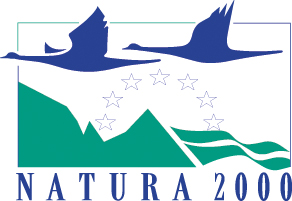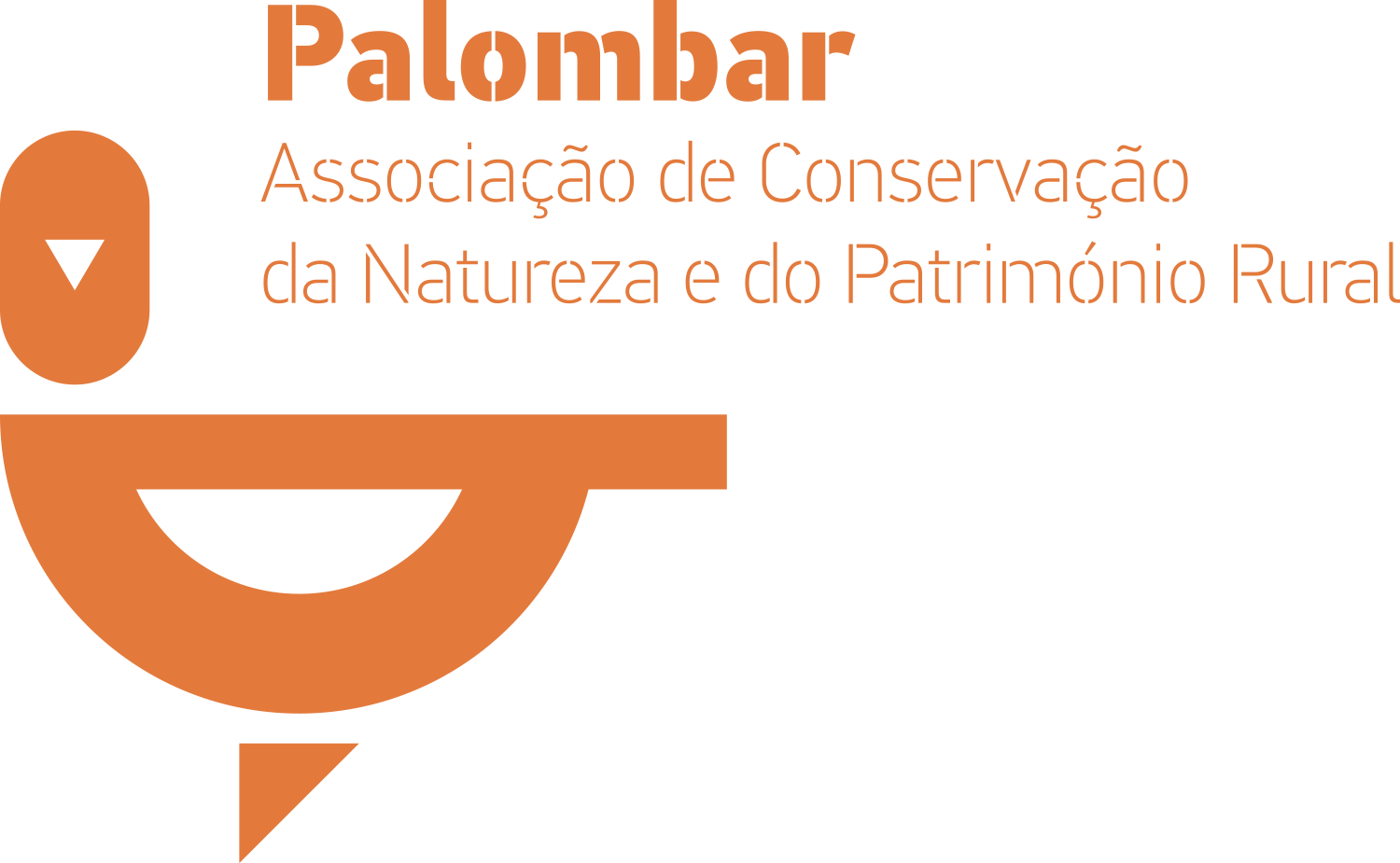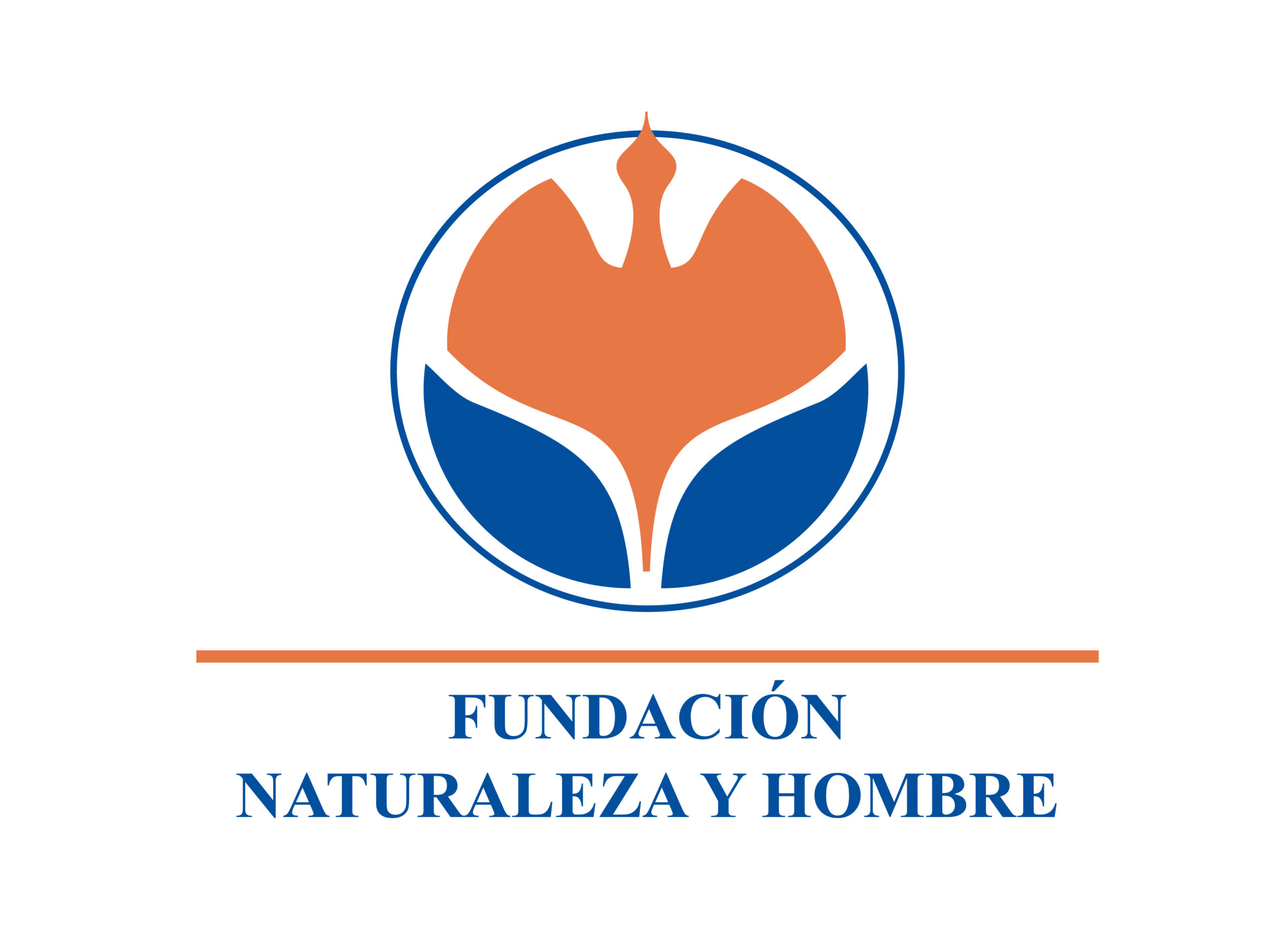LIFE Aegypius Return
Natura 2000 sites
- Homepage
- Pages
- LIFE Aegypius Return
- Project
- Natura 2000 sites
What is the Natura 2000 Network and why is it important?
Natura 2000 is a network of over 27,000 protected natural areas and habitats established to conserve and protect Europe’s rich biodiversity, covering more than 18% of the EU’s land area and nearly 6% of its marine area. This network plays a crucial role in maintaining ecological balance, providing important ecosystem services, and offering opportunities for tourism and recreation while also promoting sustainable development. The Natura 2000 network is an essential tool for preserving Europe’s natural heritage and ensuring a sustainable future for all.
As part of this effort, the LIFE Aegypius Return project aims to implement targeted conservation actions across ten Natura 2000 sites, seven in Portugal and three in Spain, important for the Cinereous Vulture. By doing so, the project team aims to achieve the project objectives, with the ultimate goal to ensure a long-term favourable conservation status for the Cinereous Vulture in Portugal.
To successfully implement conservation actions on the ground, the Vulture Conservation Foundation (VCF), which leads the LIFE Aegypius Return project, will use its expertise in vulture conservation and its extensive network to coordinate cross-border cooperation between Portuguese and Spanish stakeholders, working alongside all the project partners.
The Natura 2000 sites in Portugal and LIFE Aegypius Return project
Douro Internacional e Vale do Águeda | Natura 2000 code: PTZPE0038

Over 62,000 hectares of land make up the protected area known as Douro International e Vale do Águeda (PTZPE0038), which is situated in Portugal’s northeast. It is home to a diverse range of species, including the Cinereous Vulture, a Critically Endangered species in Portugal, as well as the Bonelli’s eagle and Black stork. The region’s rocky cliffs, steep valleys, and open plains provide an ideal habitat for its fauna and flora, which consist of both Mediterranean and Atlantic species such as cork oak, olive trees, and heather. Douro Internacional e Vale do Águeda is a significant biodiversity hotspot in Portugal and plays a vital role in preserving the unique ecosystem of the region.
To boost the breeding success of the Cinereous Vulture in the Douro colony, which is the smallest in Portugal with only two pairs, LIFE Aegypius Return project teams from Associação Transumância e Natureza (ATN) and Palombar will build new and repair existing nests and monitor the breeding season. To reduce fire risk, they will clear shrubs, recover agricultural land patches and spend hundreds of hours surveilling the area for fires. Additionally, they will establish a supplementary feeding station and several non-fenced feeding areas to improve food availability, support the vulnerable Douro colony and promote connectivity among colonies. This Natura 2000 site will also receive the Cinereous Vulture acclimatisation cage, which will be crucial for the soft release of rehabilitated individuals coming from fauna recovery centres to help reinforce the population and promote the growth of the colony. Finally, anti-poisoning dog units will operate in the Douro following the creation of two new such units within the National Republican Guard – GNR in Portugal.
Rios Sabor e Maçãs | Natura 2000 code: PTZPE0037

Northeastern Portugal is home to the protected area known as Rios Sabor e Maçãs (PTZPE0037), which is about 44,000 hectares large. A variety of plant and animal species can thrive in the region’s topography, which includes mountainous terrain, steep valleys, and dense forests which can serve as a suitable habitat for them. The area is home to a variety of fauna, including the Iberian wolf, the Roe deer, and the Golden eagle, among others. The flora of the region is also diverse, with a mix of Mediterranean and Atlantic species, such as holm oak, cork oak, and chestnut trees. Rios Sabor e Maçãs is significant for its cultural and historical value but also for its rich biodiversity, and is key in conserving the region’s distinctive ecosystem.
Although the Cinereous Vulture does not breed in Rios Sabor e Maçãs, it regularly occurs in this area and has a high potential of expansion. In this site, LIFE Aegypius Return aims to enhance the habitat of the Cinereous Vulture, establishing non-fenced feeding areas, among other actions, to encourage the establishment of a new colony and promote range expansion and connectivity. Palombar, with its multidisciplinary team and experience as a partner of the LIFE Rupis project, will manage this northern site in coordination with other scavenger conservation projects in the region, continuing the efforts already carried out in this region.
Vale do Côa | Natura 2000 code: PTZPE0039

Vale do Côa (PTZPE0039) is a protected area located in northeastern Portugal, covering approximately 66,000 hectares. Vale do Côa hosts unique and diverse ecosystems that make it an important area for conservation efforts in Portugal. The habitat in the region is primarily composed of rocky cliffs, steep valleys, and open plains, and is home to a diverse range of species, including the Iberian lynx, Egyptian Vulture, and Bonelli’s Eagle. It provides an ideal nesting and feeding site for scavengers such as the Cinereous Vulture.
The Cinereous Vulture frequently occurs in Vale do Côa and has the potential for expansion. ATN’s Faia Brava Reserve, the first privately owned protected area in Portugal, situated within Vale do Côa, will undertake habitat management actions to support the sustainability of the Cinereous Vulture population in Portugal. Wildfires are becoming more prevalent due to climate change, agricultural abandonment and shrub vegetation, highly threatening the species. A key goal is to improve the habitat’s fire resilience by clearing shrubs, restoring agricultural land patches, and monitoring for fires. These activities can also support wider wildlife conservation goals. Implementing fire preventive forestry and habitat management measures promote wild ungulate and wild rabbit populations that benefit from the more open landscapes, which can subsequently improve the quality and quantity of food resources for Cinereous Vultures. Wild ungulates can also contribute to long-term maintenance of intervened areas, reducing maintenance costs.
Serra da Malcata | Natura 2000 code: PTZPE0007

Located in the eastern region of Portugal, Serra da Malcata (PTZPE0007) is a protected area spanning over 16,000 hectares. Its rugged terrain of granite ridges and valleys provides a suitable habitat for a diverse range of animals, including the Critically Endangered Iberian lynx, Wild boar, and the rare Spanish Imperial eagle. Additionally, the region’s flora is diverse, with a mix of Mediterranean and Atlantic species, such as cork oak, holm oak, and pine trees, which are ideal for Cinereous Vultures to build their nests on. As an important biodiversity hotspot in Portugal, conservation efforts in Serra da Malcata have focused on preserving the natural habitats of the region and reducing human activities that pose a threat to the local biodiversity, including habitat loss, overgrasing, and illegal hunting.
The LIFE Aegypius Return project teams of ATN and Fundación Naturaleza y Hombre (FNyH) share the responsibilities of implementing project actions in Serra da Malcata, focusing on habitat management. As part of these efforts, one of the main actions in the area is to build new nests to attract new pairs and reinforce existing nests to promote breeding success. This is particularly important as the region hosts a small breeding population of Cinereous Vultures. It is essential to maintain and reinforce existing nests, as poor nests may collapse, which can result in breeding failure.
Tejo Internacional, Erges e Pônsul | Natura 2000 code: PTZPE0042

Tejo Internacional, Erges e Pônsul (PTZPE0042) is an important 26,000-hectare biodiversity hotspot in central Portugal, featuring a mix of Mediterranean and Atlantic habitats, including rivers, cliffs, and forests. The area is home to a diverse array of fauna, including the Iberian lynx, otter, Lesser kestrek and Black stork, as well as flora such as cork oak, olive trees, and rockrose. In 2010, after four decades of extinction in Portugal, Cinereous Vulture pairs from a nearby Spanish colony began breeding at Tejo Internacional Natural Park, marking the species’ natural recolonisation in the country. At the start of the LIFE Aegypius Return project, Tejo was home to a small breeding colony of 30 Cinereous Vulture pairs. Sociedade Portuguesa para o Estudo das Aves (SPEA) will lead the conservation actions in this site by creating non-fenced feeding areas, building and repairing nests, and clearing shrubs and opening firebreaks to protect nesting trees from fires. The project will also address the issue of unsubstantiated claims from livestock breeders that the vultures are attacking and killing their animals using social and ecological dimensions to address this emerging issue. To prevent nest disturbance, the project will identify harmful human activities, evaluate existing policy plans, and establish clear rules and restrictions. This is particularly relevant at Tejo Internacional since some Cinereous Vulture pairs are located outside of the natural park, where there is no specific protective zonation, increasing the risk of disturbance, breeding failure and abandonment of nesting sites. Finally, ANPC will tackle lead poisoning by providing awareness and training workshops to transition hunters to lead-free ammunition and GNR’s new anti-poisoning dog units will start operating at Tejo Internacional to reinforce anti-poisoning efforts.
Mourão/Moura/Barrancos | Natura 2000 code: PTZPE0045

Located in the southern region of Portugal, the Mourão/Moura/Barrancos (PTZPE0045) protected area spans approximately 78,000 hectares and is characterized by typically Mediterranean landscapes, featuring rolling hills, open plains, and the characteristic montado (cork oak forest landscape). This area provides a rich habitat for diverse plant and animal species, including the Iberian imperial eagle, the Iberian lynx and the Cinereous Vulture, among many others. With a variety of flora, such as cork oak, holm oak, and rockrose, this region is an important biodiversity hotspot in Portugal and plays a vital role in conservation efforts to preserve the unique ecosystem. The conservation efforts in Mourão/Moura/Barrancos have focused on preserving the natural habitats of the region and reducing human activities that pose a threat to the local biodiversity, including habitat loss, overgrasing, and illegal hunting.
Herdade da Contenda E.M. (HC) manages a well-established Cinereous Vulture colony with about 10 breeding pairs in Mourão/Moura/Barrancos. Through the LIFE Aegypius Return project, HC and Liga para a Protecção da Natureza (LPN) will build new nests and reinforce existing ones to improve productivity and reduce the risk of nest collapses. LPN is also establishing non-fenced feeding areas for Cinereous Vultures in extensive livestock farms, which closely mimics their natural ecosystem and could be a game changer for vulture conservation in Portugal. As one of the breeding colonies for the species, ANPC will also hold workshops to raise awareness about lead ammunition and demonstrate the advantages of transitioning to lead-free ammunition for wildlife conservation and human health.
Vale do Guadiana | Natura 2000 code: PTZPE0047

Vale do Guadiana (PTZPE0047) is a protected area in the southeastern region of Portugal, covering approximately 69,000 hectares. It is a unique ecosystem characterised by Mediterranean habitats, such as forests, shrublands and river valleys. The area is home to a variety of fauna, including the Spanish imperial eagle and the Iberian lynx. The region also boasts a diverse flora, including cork oak, olive trees and rockrose. Since Vale do Guadiana is a critical biodiversity hotspot in Portugal, conservation efforts focus on preserving natural habitats and reducing human activities threatening local biodiversity, such as habitat loss, overgrasing, and illegal hunting.
The LIFE Aegypius Return project will implement several habitat management measures around Vale do Guadiana, establishing non-fenced feeding areas and maintaining nesting platforms. Here, Cinereous Vultures regularly occur but do not breed yet. However, there is a high potential for the establishment of a new colony in this area. Led by LPN, these conservation actions will promote range expansion and connectivity among colonies, with the ultimate goal of securing a solid and sustainable expansion of the species in Portugal.
The Natura 2000 sites in Spain and LIFE Aegypius Return project actions
Campo de Azaba | Natura 2000 code: ES0000202

Campo de Azaba (ES0000202) is a protected area located in the western region of Spain, near the border with Portugal. It covers an area of approximately 16,000 hectares and is characterised by a mix of Mediterranean and continental habitats, including steppe grasslands, forests, and river valleys. It is home to a variety of fauna, including the Cinereous Vulture, Spanish Imperial eagle, and Iberian lynx, and is also home to a diverse flora, such as holm oak, cork oak, and rockrose. It is an important biodiversity hotspot in Spain, and it plays a crucial role in conservation efforts aimed at protecting the region’s unique ecosystem.
As a result of the large number of livestock grazing in this area, Campo de Azaba is a feeding area for a large community of carrion-eating birds, including the Cinereous Vulture, the Griffon Vulture and the Egyptian Vulture. Although there are currently no Cinereous Vultures breeding pairs in this site, Campo de Azaba will play a crucial role in promoting connectivity between the Portuguese and Spanish colonies, a key objective of LIFE Aegypius Return. To attract pairs, Fundación Naturaleza y Hombre (FNyH), which will lead the project’s actions on the Spanish side of the border, will build new nesting platforms. In addition, to address the increasing risk of fires, FNyH will undertake extensive preventive forestry measures. Additionally, the project team will improve food availability and quality by creating non-fenced feeding areas and renovating the existing supplementary feeding station at the Campanarios de Azaba Farm. This feeding station currently attracts all three species of vultures in the area. However, the specific aim of this task is to improve and adapt the physical environment and food supply of the feeding area to cater to the preferences of the Cinereous Vulture.
Sierra de Gata y Vale de Pilas | Natura 2000 code: ES0000370

Sierra de Gata y Vale de Pilas (ES0000370) is a protected area located in the western region of Spain, with a land of 42,000 hectares. It hosts a mix of Mediterranean and continental habitats, including mountains, forests, and river valleys, and is distinguished by its diverse vegetation, which includes oak and cork forests, as well as heathlands and rocky outcrops. The region is home to a wide variety of wildlife, including birds of prey such as the Golden eagle and the Peregrine falcon, as well as mammals like the wild boar and the red deer.
It is home to approximately 85-135 Cinereous Vulture pairs, which makes Sierra de Gata y Vale de Pilas a very important breeding colony for the species. Here, FNyH will build new nests but also maintain existing artificial platforms that were built in this site, but never occupied. Within LIFE Aegypius Return, the project team will prune the branches to improve accessibility of nests to the vultures and replace or refill the nesting material. Just like in most of the project’s intervention areas, FNyH will also implement preventive forestry measures of shrub clearings to recover open areas, promote natural regeneration and reduce fire risk.
Canchos de Ramiro y Ladronera | Natura 2000 code: ES0000434

Canchos de Ramiro y Ladronera (ES0000434) is a protected area in western Spain with a total area of around 3,000 hectares. Mountains, rocky outcrops, and river valleys, which combine Mediterranean and continental environments in the region, provide an optimal habitat for various animal species such as the Iberian lynx, the Cinereous Vulture, and the Spanish imperial eagle, and plant species such as cork oak, rockrose, and broom. Conservation actions at Canchos de Ramiro y Ladronera focus on habitat management, bird monitoring, promotion of sustainable land use practices, and public awareness to preserve the unique rocky habitat and associated bird species, making this site an important biodiversity hotspot in Spain.
Canchos de Ramiro y Ladronera is home to between 9-18 Cinereous Vultures pairs. This protected site is significant for the expansion of the Cinereous Vulture population towards the west, notably Portugal, from areas like Monfragüe National Park with high Cinereous Vulture populations. Such an expansion will benefit both the source population in Spain and the population in the project’s target areas in Portugal by reducing negative density-dependent effects on breeding parameters. To aid the expansion, FNyH will construct a new supplementary feeding station in this site, boosting trophic resources for the species. Other actions at Canchos de Ramiro y Ladronera include the establishment of non-fenced feeding sites, which will also improve food availability. Just like in other Spanish Natura 2000 sites, to prevent any potential fires, FNyH will implement fire preventive forestry and habitat management measures.











